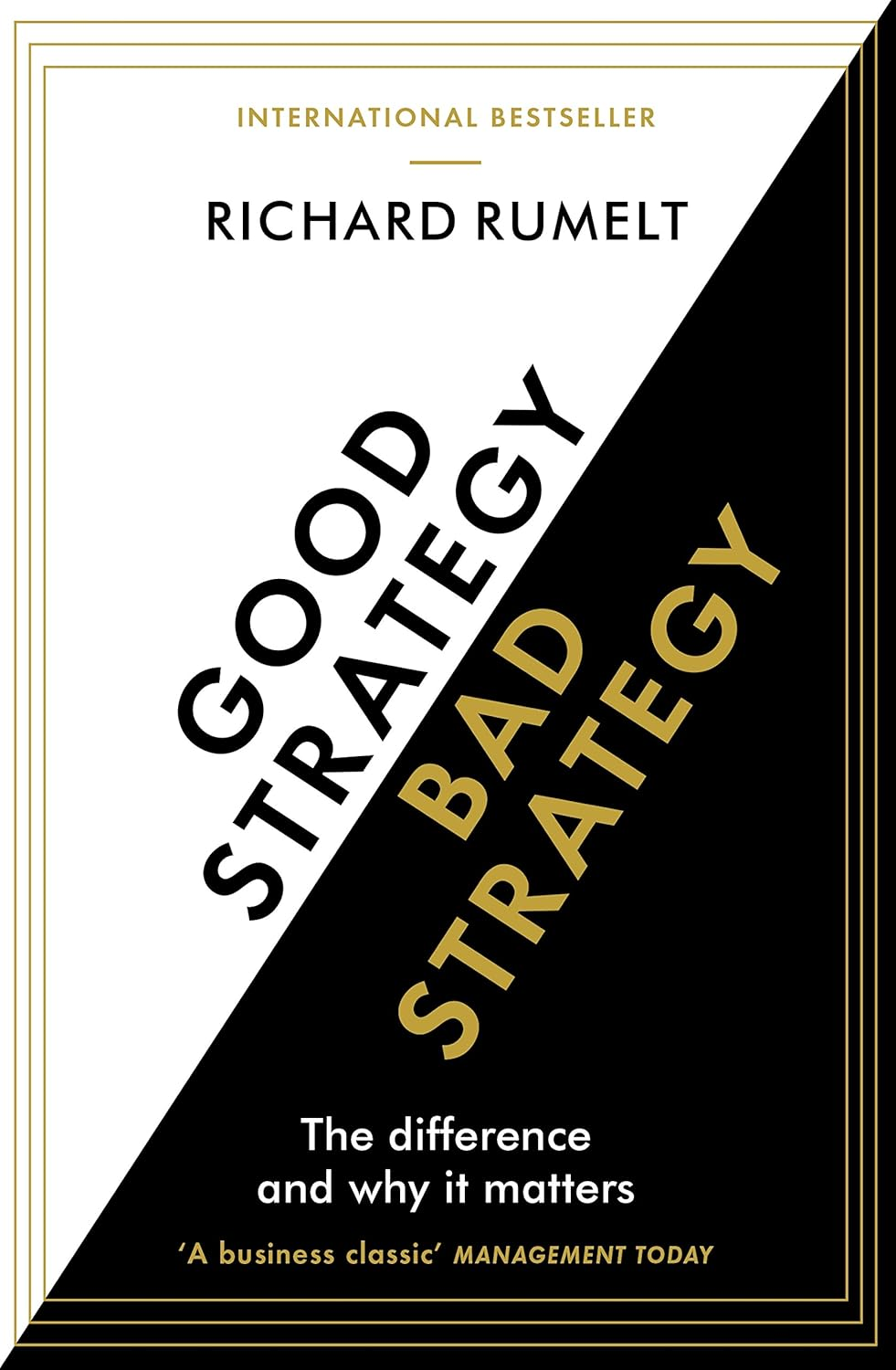Good Strategy/Bad Strategy
-- This summary is a personal interpretation for educational purposes. All rights belong to and his publishers.--
The purpose of this publication is:
- To promote financial literacy in an altruistic way
- To reach the population with fewer resources
- To encourage the purchase of the original book. Amazon - Good Strategy / Bad Strategy
- This is a content generated by the most common AIs, from the content they have in their databases. Such content can be accessed by any user, I have only compiled and exposed such information here. It is NOT my own material -
- The division and structure may not coincide with the original, and may have been adapted for its comprehension and dynamism. -
📘 Introduction
🧠 A Compass in Times of Confusion
In Good Strategy/Bad Strategy, Richard Rumelt doesn’t talk about managerial trends or empty catchphrases. He cuts to the core. He shows us that, in the real world, many organizations, companies, and even governments don’t actually have a strategy — even though they think they do. What they have is a mix of vague goals, well-meaning intentions, and PowerPoints filled with empty slogans.
Rumelt makes a bold statement from the very first pages: real strategy is not the same as ambition, vision, or charismatic leadership. It is a clear diagnosis, a smart guiding approach, and a coherent set of actions.
📉 Bad strategy? Common, superficial, decorative.
Good strategy? Rare, incisive, transformative.
And the most unsettling part: “The presence of bad strategy often goes unnoticed… until it’s too late.”
📖 1 — “The Power of Strategy”
🎯 More Than a Goal: A Method
The first chapter is not a theoretical introduction but a declaration of principles. Rumelt immediately establishes that strategy is not a list of goals. Nor is it a fancy vision statement framed in a company’s lobby. Strategy, he says, is a deliberate approach to overcoming a significant challenge.
🧠 Rumelt references business, military, and even sports cases to make a key point: “A good strategy is like a lever. With the right diagnosis, you can move the world.”
📌 The heart of a good strategy consists of three elements:
-
Clear diagnosis: understanding the real problem.
-
Guiding policy: the general framework for action.
-
Coherent actions: specific, connected, logical steps.
🗣️ Key Quote:
“A good strategy is rare because it requires thinking. And thinking is uncomfortable.”
🔍 Rumelt has no patience for superficiality. He calls out strategies that are merely statements of intent: “We want to be global leaders,” “Our goal is to grow 20%,” “We are going to innovate.” What problem do they solve? What advantage are they leveraging? Where is the focus?
🧭 Chapter Takeaways:
-
Strategy is not a wish; it’s a response to a specific problem.
-
Without diagnosis, every action is just noise.
-
Clarity is more powerful than ambition.
📖 2 — “The Structure of a Good Strategy”
🔧 Three Gears That Must Work Together
In this chapter, Rumelt breaks down what he calls “the core of a good strategy.” He does so like an engineer dissecting a machine: precisely, logically, and with brutal honesty.
🧩 The three elements mentioned in the previous chapter — diagnosis, guiding policy, coherent actions — are now presented with concrete examples and a central message: real strategy is not improvised. It’s built, connected, and tested.
🗣️ Key Quote:
“Diagnosis, direction, and action: that is the structure that separates real strategy from empty rhetoric.”
📌 Rumelt also warns that often “strategy” is done without any diagnosis. Plans are launched because others are doing it, models are copied blindly, trendy phrases are parroted. But that doesn’t work.
🧭 Chapter Takeaways:
-
The diagnosis defines the terrain. The policy shows the path. The actions walk it.
-
Without structure, strategy cannot withstand the pressure of chaos.
-
Copying without understanding is a recipe for failure.
📖 3 — “Bad Strategy”
🚨 The Silent Enemy
This chapter is a warning. Rumelt dismantles the false ideas that often masquerade as strategy — and he does so forcefully. Bad strategy, he says, is not just useless... it’s dangerous. It creates an illusion of control, diverts resources, and often blinds us to the real problems.
📉 What does bad strategy look like? Rumelt identifies four clear signs:
-
Empty rhetoric: fancy words with no substance.
-
Lack of focus: trying to do everything at once.
-
Goals without a method: objectives not backed by real plans.
-
Confusing strategy with values or vision: “we want to be ethical,” “we want to innovate”... that’s culture, not strategy.
🗣️ Key Quote:
“Bad strategy is more common than good, not because organizations are incompetent, but because the fog of power confuses clarity with grandiosity.”
🧠 Rumelt directly attacks what he calls “the illusion of modern strategy”: documents that look important, with charts, KPIs, and heroic declarations... but don’t solve any real problem.
🔍 One example mentioned is the U.S. education system. For years, strategic plans talked about “improving quality” and “raising standards.” But they didn’t address the true diagnosis: structural inequality, misaligned incentives, and lack of focus on teacher training.
🧭 Chapter Takeaways:
-
A strategy that doesn’t prioritize is not strategy.
-
Vague language hides the lack of thought.
-
Not everything that sounds strategic actually is.

